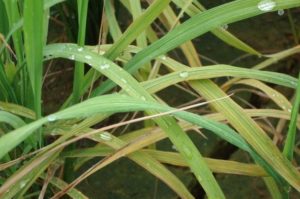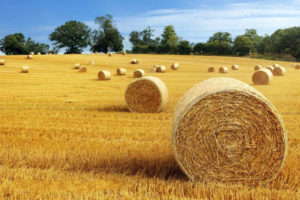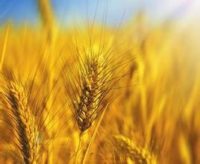Key Technologies of Improving Wheat Quality
With the improvement of people’s living standard and the adjustment of planting structure, improving wheat quality has become the theme of wheat production. Wheat quality is affected by various factors such as variety, environment, ecology and cultivation. There are many ways to improve wheat quality, except to select high quality varieties, wheat quality also can be improved by some cultivation measures. The key technologies are as follows:
Reasonably make use of nitrogen fertilizer
The nitrogen requirement of wheat growth and  grain formation was mainly obtained from soil, and the effect of soil nitrogen on wheat grain quality was very obvious.
grain formation was mainly obtained from soil, and the effect of soil nitrogen on wheat grain quality was very obvious.
The amount of nitrogen fertilizer should be determined by the force, variety and other cultivation conditions. Under normal conditions of high yield, the total nitrogen fertilizer per hectare is 225-270kg, the ratio of basal and top dressing is 6: 4 or 5: 5, and the top dressing should be divided into three stages: wintering, jointing and booting. Period ratio is l: l: 1, in particular, the top dressing should be the period of jointing and booting. In addition, we can also have leaf sprinkler nitrogen but not soil nitrogen, and the urea is best choice. Meanwhile, the best spraying period is the milk to the end of milk, spraying concentration and the number should not be too high to not burn the leaves, the concentration is generally 2% -10%, the number of pure nitrogen per hectare is 37.5 ~ 75Kg.
Appropriately increase the amount of potash fertilizer
Studies have shown that using potash fertilizer in potassium-deficient soil can improve production. Since potassium is closely related to nitrogen metabolism, potassium can promote protein synthesis and increase protein content of wheat. Therefore, when nitrogen and phosphorus supply is sufficient, Potash is beneficial for grain yield and quality.
phosphorus supply is sufficient, Potash is beneficial for grain yield and quality.
The study shows that apply 45 ~ 90Kg potassium fertilizer per hectare can have stable production; apply 60-105Kg per hectare can have stable production and high protein content. For the application, with the application delayed, the grain protein content will gradually be increased. The best period for increasing protein content is the flowering period. Appropriately promote the application of potash fertilizer can improve the quality of wheat. However, there must be sufficient nitrogen and phosphorus supply to show good results.
Correctly apply the micro – fertilizer
Except the three nutrient elements of wheat: nitrogen, phosphorus, potassium, Even though the other elements for wheat need a little, but they still have a great influence on the yield and quality of wheat production.
Boron is necessary for the synthesis of nucleic acids and proteins. Apply proper amount of boron fertilizer in the soil with insufficient boron can effectively improve the protein content and amino acid content of wheat grains so that improving the nutritional quality of wheat.
Zinc is the component of many enzymes and also is the activator of the enzyme. Zinc also involved in a variety of metabolic activities in plants, zinc deficiency will influence wheat plant growth, yield will decline, quality will metamorphism.
Manganese is the reduction activator of nitric acid, plant has no manganese will affect its use of nitrate. When the soil has no manganese, we can apply the amount of manganese to improve the wheat quality.
Spraying those three kinds of elements to plant when the plant at booting stage. Spraying boron can use 0.1% boric acid solution, spraying manganese can use 0.1% manganese sulfate solution,  spraying zinc can use 0.04% zinc chloride or 0.2% zinc sulfate solution.
spraying zinc can use 0.04% zinc chloride or 0.2% zinc sulfate solution.
Supply adequate organic fertilizer
Organic fertilizer is a kind of complete fertilizer which contains a wealth of organic matter and a variety of nutrients. Generally, increasing the application of organic fertilizer can increase the grain protein content. Under different fertility conditions, the application of different organic fertilizers can increase the yield, but the effect of improving yield and quality is not the same. The effect will be better when the fertility is poor. In addition, increasing the fertilizer in a certain range can improve the yield and quality of plant, but from the principle of economic fertilization, fertilizer should be selected according to local conditions.
Timely and appropriate irrigation
It is generally believed that lack of water during the wheat growth period will lead to the decline in yield, and increase of grain protein content but the final protein yield is not high; in sufficient water conditions, the yield can be greatly increased, the protein content does not increase or decline. Therefore, the number of irrigation should be based on weather conditions. In the year lack of water, increase the number of irrigation can increase the total yield and quality, the appropriate irrigation can also increase the grain protein content, but too much irrigation is bad for the quality of the plant.
Previous: How to Identify the PH of Soil
